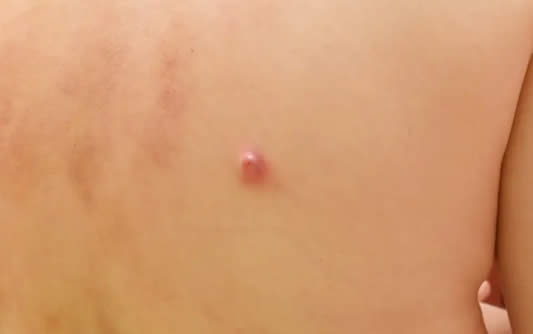Boils, also known as furuncles, are painful and inflamed lumps that form beneath the skin. They are caused by an infection in a hair follicle or oil gland. Boils can occur anywhere on the body, but are most commonly found on the face, neck, armpits, buttocks, and thighs. In this article, we will discuss the causes, symptoms, types, and treatments for boils.
Causes of Boils
Boils are most commonly caused by the bacteria Staphylococcus aureus. This bacteria normally lives on the skin and in the nose, but can enter the body through a cut or break in the skin. Boils can also be caused by other types of bacteria, such as Streptococcus pyogenes.
Other factors that can increase the risk of developing boils include:
- Poor hygiene
- Diabetes
- Weakened immune system
- Friction from tight clothing or shaving
- Exposure to harsh chemicals
- Certain medications, such as steroids
Symptoms of Boils
Boils typically start as a red, painful bump that gradually increases in size over a few days. They can range in size from a pea to a golf ball, and may be accompanied by a fever or general feeling of illness. As the boil grows, it may develop a white or yellow center, which is pus that has accumulated under the skin. The skin over the boil may also become tender and swollen.
Types of Boils
There are several types of boils, including:
- Furuncles: single boils that occur on the skin and are typically caused by Staphylococcus aureus.
- Carbuncles: clusters of boils that are often larger than furuncles and can be very painful. Carbuncles are more likely to cause a fever or other systemic symptoms than furuncles.
- Cystic acne: deep, painful, and inflamed cysts that occur on the face, neck, chest, and back. These cysts are caused by blocked hair follicles.
Treatments for Boils
Most boils will heal on their own within a few weeks. However, there are some treatments that can help alleviate the pain and speed up the healing process. These treatments include:
- Applying warm compresses to the affected area for 10-15 minutes several times a day.
- Taking over-the-counter pain relievers, such as ibuprofen or acetaminophen, to alleviate pain and reduce inflammation.
- Keeping the affected area clean and dry to prevent further infection.
- Taking antibiotics if the boil is severe or if there are multiple boils.
- In rare cases, a boil may need to be drained by a healthcare professional. This involves making a small incision in the skin and draining the pus out of the boil.
Preventing Boils
There are several steps you can take to prevent the development of boils, including:
- Practice good hygiene, such as washing your hands regularly and showering after exercise or heavy sweating.
- Avoid sharing personal items, such as towels, razors, or clothing.
- Avoid tight clothing that may cause friction on the skin.
- Treat any cuts or breaks in the skin promptly with antiseptic to prevent infection.
Boils can be painful and uncomfortable, but they are usually not a cause for serious concern. Practice good hygiene and take steps to prevent the development of boils to keep your skin healthy and free of infection. Most boils will heal on their own within a few weeks, but if you experience any symptoms of a severe infection or if the boil does not heal, it is important to seek medical attention. Call our Bakersfield dermatology office to schedule an appointment.


